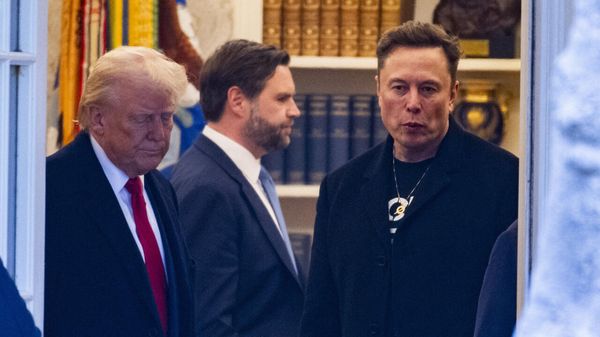CHICAGO — When it comes to lung-damaging smog, Chicago and the rest of Cook County are the nation’s worst neighbors.
Newly released data from the U.S. Environmental Protection Agency show air pollution from the city and 120 of its suburbs contributes more to smog violations in other states than any other county.
Wisconsin suffers the brunt of Cook County’s dirty air during hot summer days, when smog is formed by a reaction between sunlight and pollution from car and truck exhaust, power plants and factories, fumes from volatile solvents and gasoline vapors.
Based on an analysis of air quality monitoring during the past several years, the EPA projects Chicago and the Cook County suburbs will account for more than a fourth of this summer’s smog problems in Kenosha and about a fifth of the noxious air Wisconsinites breathe in Racine and Sheboygan.
Only New York comes close to being that bad of a neighbor. The EPA determined the state is responsible for 16% of the dirty air in nearby Fairfield County, Connecticut, which also gets hit by pollution drifting east from Chicago.
But smog, technically known as ground-level ozone, doesn’t travel in just one direction.
Pollution from Wisconsin is responsible for more than 3% of the smog in Cook County, the EPA concluded, enough to violate the federal Clean Air Act.
Indiana polluters also send worrisome concentrations of dirty air to Illinois’ largest county and to Wisconsin, the EPA data shows. So do states as far away as Texas.
With scientists concluding smog is more dangerous than previously thought, the Biden EPA is moving to clamp down on large polluters.
The agency’s Good Neighbor Plan, expected to take effect by May, will impose more stringent limits on nitrogen oxide and sulfur dioxide emissions from coal- and gas-fired power plants in Illinois, Indiana, Wisconsin and 22 other states. A handful of other industries will be required to reduce their smog contributions for the first time.
“Air pollution doesn’t stop at the state line,” EPA Administrator Michael Regan said last year after releasing a draft of the regulations. “This step will help our state partners meet air quality health standards, saving lives and improving public health in smog-affected communities across the United States.”
Breathing even low levels of smog can inflame the lining of the lungs and aggravate asthma and other respiratory diseases; long-term exposure can permanently scar lung tissue.
In 2026, when the Good Neighbor Plan is fully implemented, the EPA estimates it will prevent roughly 1,000 premature deaths and avoid more than 2,000 hospital and emergency room visits, 1.3 million asthma attacks and 470,000 missed school days.
“The good news is the air is getting cleaner,” said Tracey Holloway, an air quality researcher at the University of Wisconsin at Madison. “But the bad news is researchers are finding there are health effects at lower levels of exposure.”
Power plants, in particular coal burners, have been subject to interstate smog standards since the late 1990s. The EPA is adding other industries in part because scores of the dirtiest coal-fired power plants have closed during the past decade and others are equipped with modern pollution-control equipment, yet in large swaths of the U.S. the air still isn’t clean enough to protect public health.
“This illustrates the need for a strong Good Neighbor rule,” said Kathleen Riley, an attorney with Earthjustice, a nonprofit legal organization.
To say the newly affected industries aren’t happy about joining the bad neighbor list is an understatement.
Some have sued the EPA in the U.S. Court of Appeals for the District of Columbia Circuit, where in September two of the three judges reviewing the case expressed skepticism about complaints the agency cut corners while drafting the new rules.
The federal regulatory docket is packed with opposition from cement makers, steel companies, chemical manufacturers, oil refiners, glass makers, gas pipeline operators and paper mills, all of whom question the methodology, legality and practicality of the EPA’s regulations.
Opponents also are invoking many of the same arguments from past battles about clean air regulations, which have generally been held up in court.
What the EPA is proposing to do “threatens to hamstring the economy and national security with extended downtime or closures and resultant shortages of domestic iron and steel supply,” U.S. Steel wrote in its response to the Good Neighbor Plan.
“Multiple boilers at Dow sites in several different covered states would be subject to costly emissions control measures on an unrealistic time frame,” the Michigan-based chemical giant said.
State-level business groups denied their industries are responsible for smog problems elsewhere and pleaded for exemptions.
“EPA has proposed extremely burdensome regulations that will unnecessarily hurt Wisconsin manufacturers,” the Wisconsin Manufacturers & Commerce group wrote, urging the agency to crack down more aggressively on industries in Illinois and other upwind states.
Mark Denzler, president and CEO of the Illinois Manufacturers Association, noted the nation’s industries have dramatically reduced air pollution during the past three decades. Moving the goal posts, Denzler said, could jeopardize new investment.
There is no question the targeted industries contribute to smog problems. The EPA estimates the Good Neighbor Plan will cost industry $1.1 billion but result in health benefits worth at least $9.3 billion and as much as $18 billion.
It remains to be seen if the EPA will allow states to enforce the new regulations as it has done with earlier versions. On Feb. 13, the agency rejected compliance plans submitted by Illinois, Indiana, Michigan, Wisconsin and 17 other states. But lawyers familiar with the process said most, if not all of the states likely will respond with amended plans.
“This is a tried and trued game where the states exploit the maximum time available to them under the statute and then, as belatedly as possible, develop their own plans after the EPA has effectively told them what they need to do,” said John Walke, an attorney at the nonprofit Natural Resources Defense Council who works on air quality issues.
States have been fighting about air pollution for decades.
The Northeast still blames coal plants in the Ohio River Valley for chronically dirty air in cities and acid rain that despoils remote forests and lakes — problems that led Congress to approve a bipartisan overhaul of the Clean Air Act in 1990. Wisconsin contends some of its counties can’t meet federal standards because pollution from Cook County drifts over Lake Michigan during summer afternoons and is baked into smog by the sun before drifting back inland.
“It’s not a good look for us,” said Mayor Ryan Sorenson of Sheboygan, Wisconsin, population 49,931, where average smog levels last year were higher than the average in Cook County. “These problems demonstrate the importance of the federal government providing some assistance and direction because there are multiple states, not just Illinois, that impact our air quality.”
———







